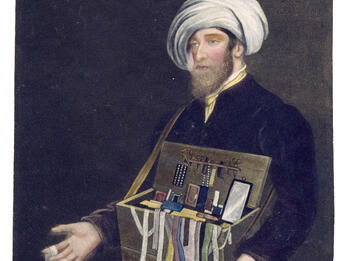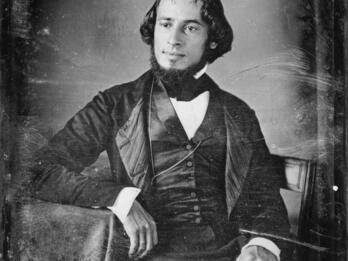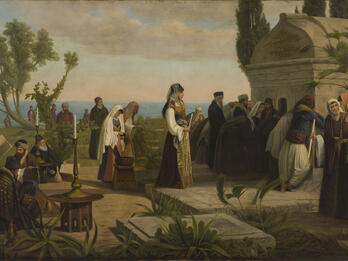Private Journal of a Visit to Egypt and Palestine
Thursday, October 18. Jerusalem.
There is no city in the world which can bear comparison in point of interest with Jerusalem,—fallen, desolate, and abject even as it appears—changed as it has been since the days of its glory. The capitals of the ancient world inspire us, at the sight of their decaying monuments, with thoughts that lead us far back into the history of our race, with feelings that enlarge the sphere of our sympathies, by uniting our recollections of the past with the substantial forms of things present: but there is a power in the human mind by which it is capable of renewing scenes as vividly without external aids, as when they are most abundant. There are no marble records on the plain of Marathon, to aid the enthusiasm of the traveller, but he feels no want of them: and thus it is, whenever any strong and definite feeling of our moral nature is concerned; we need but be present on the spot where great events occurred, and if they were intimately connected with the fate of multitudes, or with the history of our religion, we shall experience a sentiment of veneration and interest amounting to awe, and one above all comparison nobler than that which is excited chiefly by the pomp or wonders of antiquity. It is hence that Jerusalem, notwithstanding the ploughshare of the heathen, infinitely exceeds in interest Rome, Athens, and even the cities of Egypt, still abounding, as they do, in monuments of their former grandeur, and wonderful and venerable as they are, above all other places on which the mere temporal history of mankind can bestow a sanctity. No place has ever suffered like Jerusalem:—it is more than probable that not a single relic exists of the city that was the joy of the whole earth; but the most careful and enthusiastic of travellers confess, that when they have endeavoured to find particular marks for their footsteps, there was little to encourage them in the investigation. But it depends not for its power of inspiring veneration on the remains of temples and palaces; and were there even a less chance of speculating with success respecting the sites of its ancient edifices, it would still be the city towards which every religious and meditative mind would turn with the deepest longing. It is with Jerusalem as it would be with the home of our youth, were it levelled with the earth, and we returned after many years and found the spot on which it stood a ploughed field, or a deserted waste: the same thoughts would arise in our hearts as if the building was still before us, and would probably be rendered still more impressive from the very circumstance that the ruin which had taken place was complete. [ . . . ]
After an hour’s ride we came to Rachael’s tomb, which stands in a valley on the right, near to which is a well at present without water. We dismounted to view this most interesting monument of sacred history. It is formed of four square walls, with Gothic arches bricked up, and is covered by a dome-roof. On entering I was deeply impressed with a feeling of awe and respect, standing, as I thus did, in the sepulchre of a mother in Israel. The walls of the interior are covered with names and phrases chiefly in Hebrew and other Eastern characters; but some few English are to be found among them, and to these I added the names of Montefiore and myself. My feelings of gratitude on this occasion were not a little increased by a knowledge of the circumstance, that only six European females are said to have visited Palestine in the course of a century.
Credits
Published in: The Posen Library of Jewish Culture and Civilization, vol. 6.





